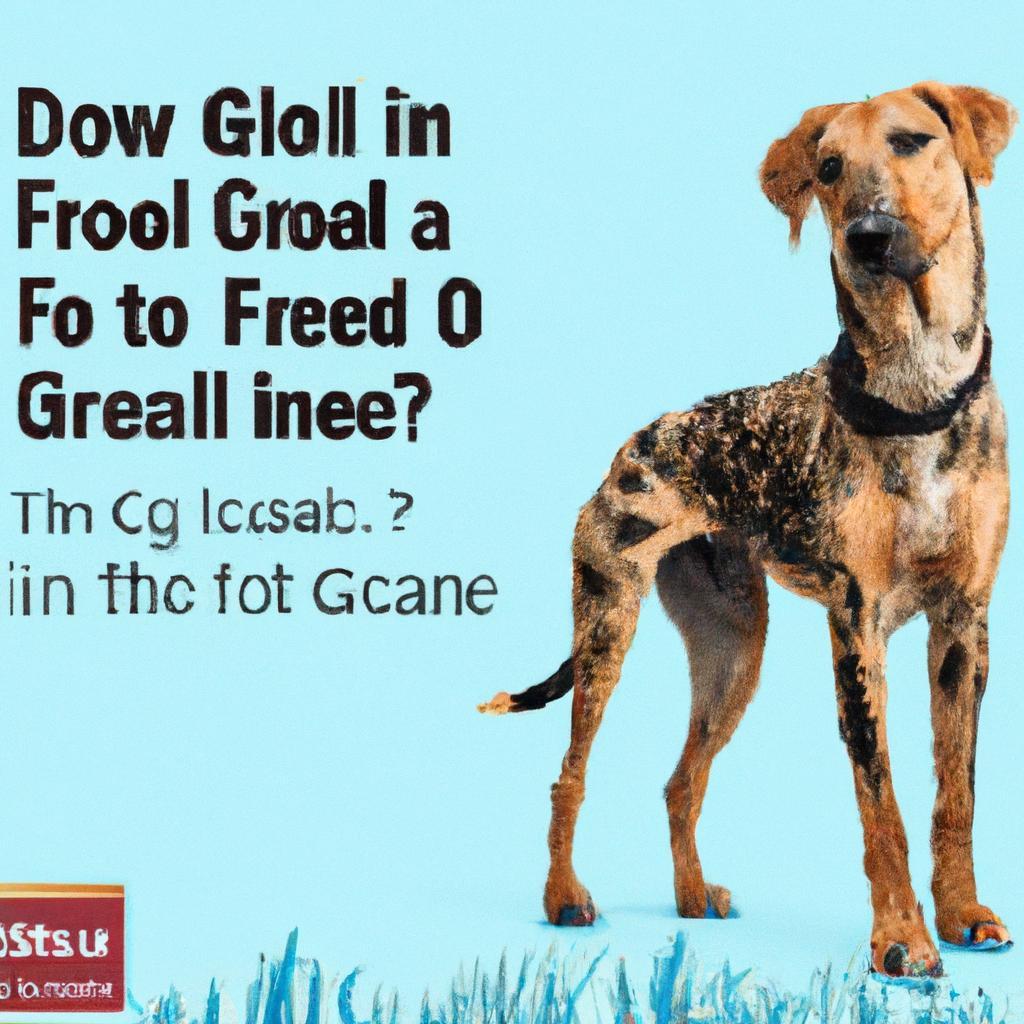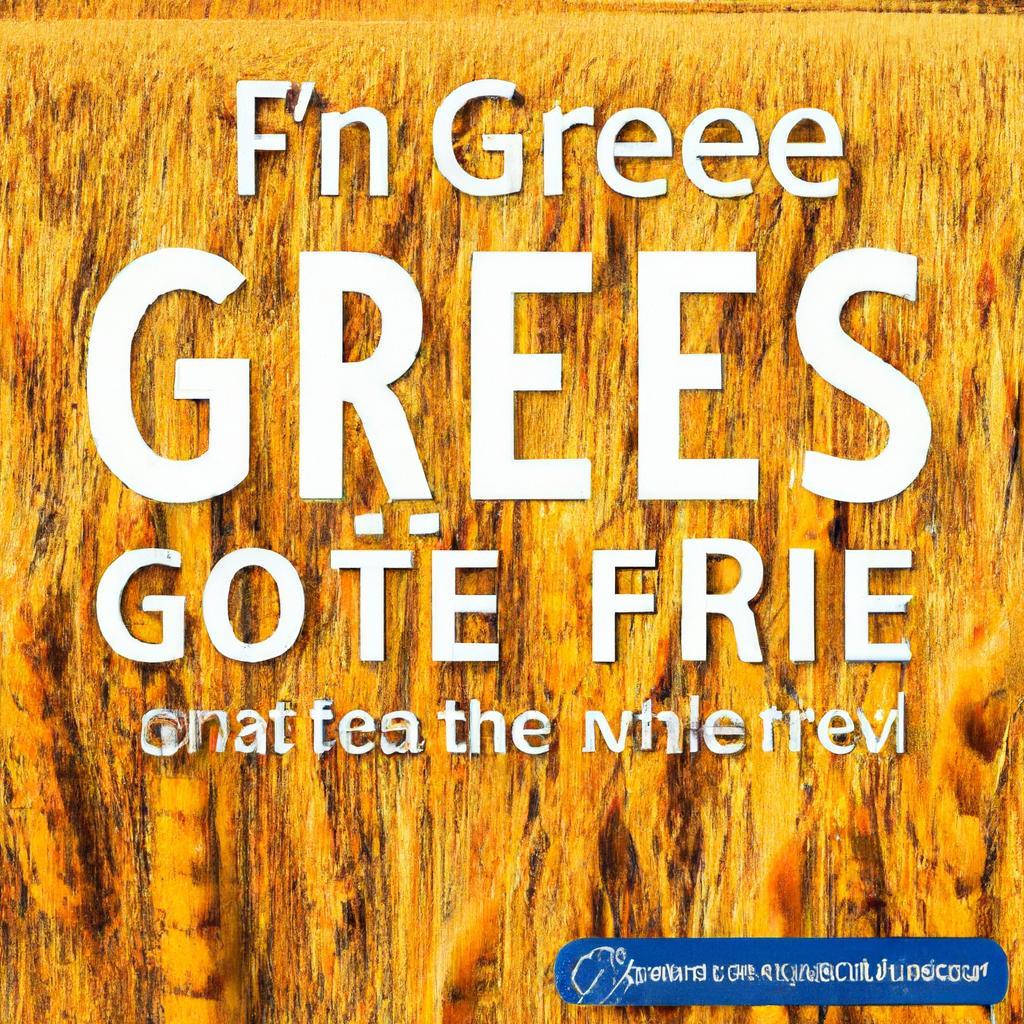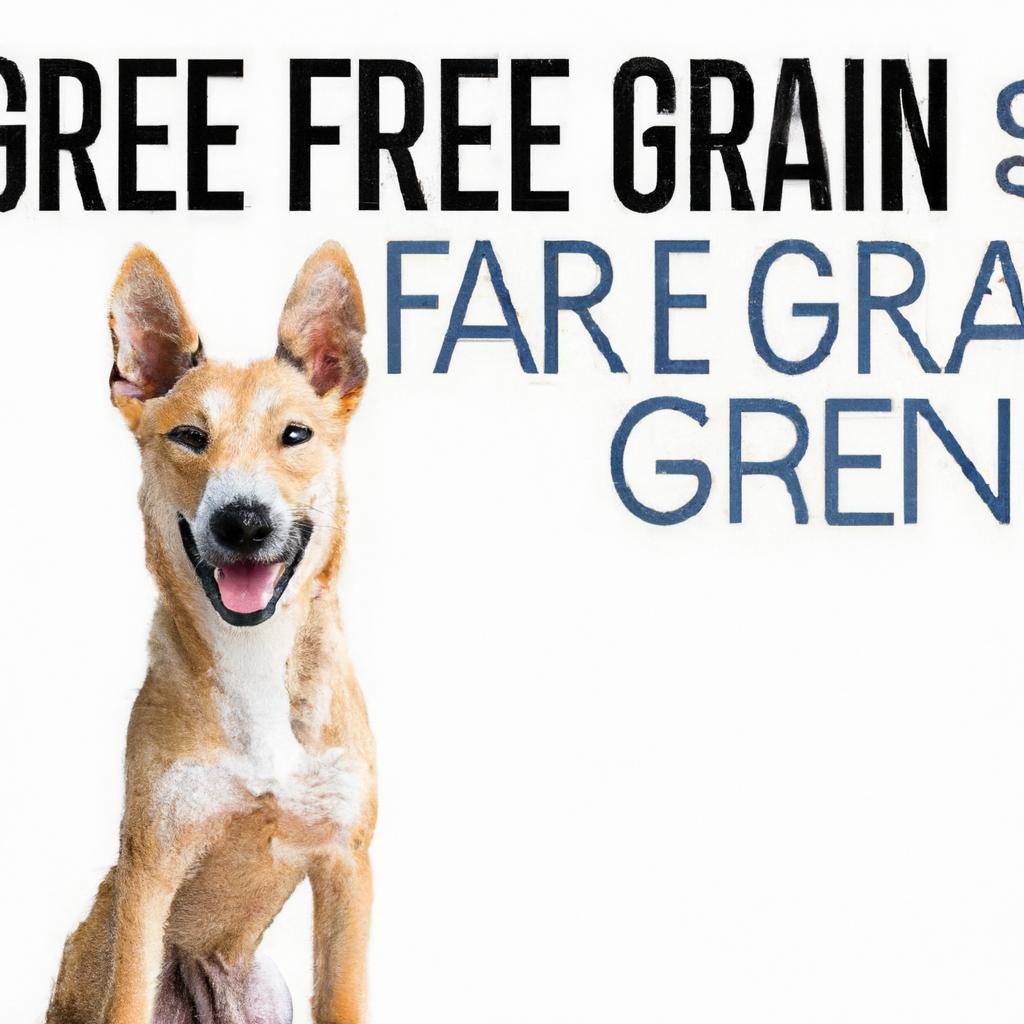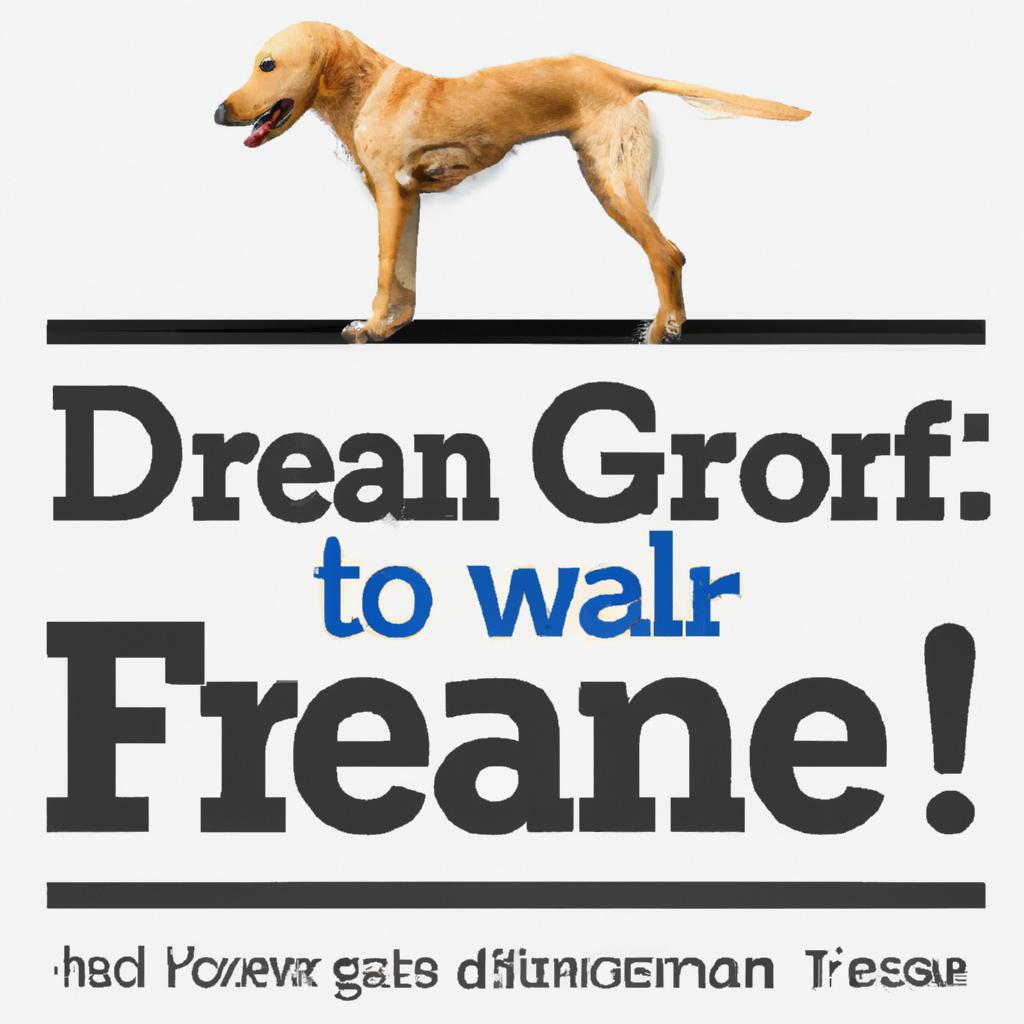When Sarah adopted Max, her energetic Labrador, she wanted the best for him. After hearing about the benefits of grain-free diets, she was determined to make the switch. But how could she tell if the dog food was truly grain-free? She learned to read labels carefully, looking for ingredients like peas, lentils, and sweet potatoes instead of wheat or corn. By choosing the right food, Sarah not only improved Max’s health but also his vitality. Make informed choices for your furry friend—check those labels and give them the nutrition they deserve!
Contents
- Understanding Grain-Free Labels on Dog Food Packaging
- Identifying Key Ingredients That Indicate Grain-Free Formulas
- Evaluating Nutritional Content for Optimal Canine Health
- Making Informed Choices: Recommendations for Grain-Free Dog Food Brands
- Q&A
Understanding Grain-Free Labels on Dog Food Packaging
When navigating the world of dog food, understanding the labels can be a daunting task, especially when it comes to grain-free options. **Grain-free** dog food is designed to exclude traditional grains like wheat, corn, and rice, which some pet owners believe can lead to better health outcomes for their furry friends. However, the term “grain-free” can sometimes be misleading, as it may not always mean the absence of carbohydrates. It’s essential to scrutinize the ingredient list to ensure that the food aligns with your dog’s dietary needs.
One of the first things to look for is the **ingredient list**. A truly grain-free dog food will prominently feature alternative sources of carbohydrates, such as sweet potatoes, peas, or lentils, instead of grains. Pay close attention to the first few ingredients, as these make up the bulk of the product. If you see grains listed among the top ingredients, then the food is not genuinely grain-free, regardless of any claims made on the packaging.
Additionally, be wary of **marketing jargon** that can cloud your judgment. Terms like “grain-free” can sometimes be accompanied by phrases such as “natural” or “premium,” which may not necessarily reflect the quality or composition of the food. Always prioritize the nutritional value over the marketing hype. Look for products that are transparent about their ingredients and provide clear information on the sourcing and quality of their components.
Lastly, consider the **nutritional balance** of the food. Grain-free does not automatically equate to a healthier option. Ensure that the food provides a well-rounded diet, including adequate protein, fats, vitamins, and minerals. Consulting with your veterinarian can also provide valuable insights tailored to your dog’s specific health needs, helping you make an informed choice that promotes their overall well-being.
Identifying Key Ingredients That Indicate Grain-Free Formulas
When evaluating dog food for a grain-free diet, it’s essential to look for specific ingredients that clearly indicate the absence of grains. Grain-free formulas typically rely on alternative carbohydrate sources that are not derived from traditional grains. Common ingredients to look for include:
- Sweet Potatoes: A nutrient-rich source of carbohydrates, sweet potatoes provide energy and are packed with vitamins.
- Peas: High in protein and fiber, peas are an excellent substitute for grains and contribute to a balanced diet.
- Potatoes: Another great carbohydrate source, potatoes are easily digestible and can help maintain your dog’s energy levels.
- Legumes: Ingredients like lentils and chickpeas offer protein and fiber, making them a popular choice in grain-free formulations.
In addition to alternative carbohydrates, protein sources play a crucial role in grain-free dog food. Look for high-quality animal proteins that are clearly listed as the primary ingredients. Ingredients such as:
- Chicken, Beef, or Fish: These should be the first ingredient listed, indicating a high protein content that supports muscle health.
- Eggs: A complete protein source, eggs provide essential amino acids that are vital for your dog’s overall well-being.
Another important aspect to consider is the absence of certain grains. Grain-free dog foods should explicitly state that they do not contain ingredients like:
- Wheat: Often used as a filler, wheat can cause allergies in some dogs.
- Corn: Another common filler, corn is not a necessary component of a dog’s diet and can lead to digestive issues.
- Rice: While often considered a safe grain, rice is not suitable for grain-free diets.
always check for certifications or labels that confirm the grain-free status of the product. Reputable brands will often highlight their grain-free formulations on the packaging, ensuring that you can make an informed choice for your furry friend. By focusing on these key ingredients and avoiding grains, you can confidently select a dog food that aligns with your pet’s dietary needs.
Evaluating Nutritional Content for Optimal Canine Health
When assessing the nutritional content of dog food, particularly grain-free options, it’s crucial to understand the ingredients that contribute to your canine’s overall health. A well-balanced diet should primarily consist of high-quality proteins, healthy fats, and a variety of fruits and vegetables. Look for dog foods that list real meat as the first ingredient, ensuring that your dog receives the essential amino acids needed for muscle maintenance and energy.
In addition to protein sources, consider the inclusion of alternative carbohydrates that can provide energy without the potential drawbacks of grains. Ingredients such as sweet potatoes, peas, and chickpeas are excellent substitutes that offer fiber and nutrients. These alternatives not only support digestive health but also help maintain stable blood sugar levels, which is vital for your dog’s overall well-being.
It’s also important to evaluate the presence of beneficial additives in grain-free dog foods. Look for products enriched with omega fatty acids, probiotics, and vitamins that promote skin health, boost the immune system, and enhance overall vitality. These components can significantly impact your dog’s coat condition, energy levels, and resistance to illness, making them essential for a holistic approach to canine nutrition.
Lastly, always check for transparency in labeling. Reputable brands will provide clear information about their sourcing and manufacturing processes. Look for certifications or endorsements from veterinary nutritionists, which can further assure you of the food’s quality. By prioritizing these factors, you can confidently choose a grain-free dog food that supports your pet’s health and happiness.
Making Informed Choices: Recommendations for Grain-Free Dog Food Brands
When selecting a grain-free dog food brand, it’s essential to consider the quality of ingredients and the nutritional balance they offer. Look for brands that prioritize high-quality protein sources, such as **real meat, fish, or poultry** as the first ingredient. This ensures that your dog receives the necessary amino acids for muscle development and overall health. Additionally, consider brands that include a variety of **fruits and vegetables** to provide essential vitamins and minerals.
Another critical factor is the absence of fillers and artificial additives. Choose brands that are transparent about their ingredient sourcing and manufacturing processes. Look for labels that highlight **natural preservatives** and avoid those with **artificial colors, flavors, or by-products**. This not only supports your dog’s health but also aligns with a more holistic approach to pet nutrition.
It’s also beneficial to research the brand’s reputation and customer reviews. Brands that have a history of positive feedback from pet owners often demonstrate a commitment to quality and customer satisfaction. Pay attention to **recall history** and how the company responds to any issues. A trustworthy brand will prioritize safety and transparency, ensuring that your dog is getting the best possible nutrition.
Lastly, consider consulting with your veterinarian before making a switch to grain-free dog food. They can provide personalized recommendations based on your dog’s specific health needs and dietary requirements. By taking these steps, you can confidently choose a grain-free dog food brand that supports your furry friend’s health and well-being.
Q&A
-
What does “grain-free” mean in dog food?
Grain-free dog food is formulated without traditional grains such as wheat, corn, and rice. Instead, it often includes alternative carbohydrate sources like sweet potatoes, peas, or lentils, making it suitable for dogs with grain sensitivities or allergies.
-
How can I identify grain-free dog food?
To identify grain-free dog food, check the ingredient list on the packaging. Look for terms like “grain-free” prominently displayed on the label, and ensure that grains are not listed among the first few ingredients.
-
Are there specific certifications for grain-free dog food?
While there are no official certifications for grain-free dog food, reputable brands often highlight their grain-free status on the packaging. Look for brands that adhere to high-quality standards and provide clear ingredient sourcing information.
-
Is grain-free dog food suitable for all dogs?
Grain-free dog food can be beneficial for dogs with specific dietary needs, but it’s not necessary for all dogs. Consult your veterinarian to determine if a grain-free diet is appropriate for your pet, especially if they have existing health concerns.
choosing grain-free dog food can enhance your pet’s health and vitality. By understanding labels, ingredients, and nutritional needs, you can make informed decisions that benefit your furry friend. Prioritize their well-being—choose wisely!

大家好,我是彼得潘,專業的手法身體治療師。我喜歡探索和研究各種主題,並透過與人工智慧的合作分享專業、實用、有趣的文章。我們定期進行人工審核,以確保內容的準確性。如果您發現文章中有任何不準確的地方,請隨時與我們聯繫,我們會及時糾正。您可以透過 [email protected] 與我們聯繫。



